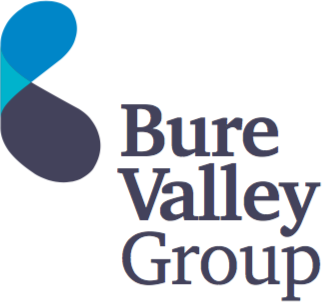Edge computing is an exciting, dynamic area of information technology (IT) which is continuing to break new ground in 2024. Below, we explore the latest industry trends, global market overview, key players, rising stars, opportunities and risks for investors. We hope these insights are useful to you. Please get in touch for more information and to explore our early-stage investment opportunities in our exclusive investor network here at Bure Valley Group.
Market Overview: edge computing
Edge computing is difficult to define due to the constant innovation which is pushing its conceptual boundaries. Yet, at its core, edge computing is about processing data closer to the source of generation. In this sense, it can be contrasted with traditional data centres and even cloud computing. Rather, edge computing occurs near the “edge” of the network – e.g. on sensors, routers or IoT (Internet of Things) devices.
The global market is expected to enjoy considerable growth in the years ahead. In 2023, the market was valued at USD 53.6 billion. By 2028, it is forecast to reach USD 111.3 billion – a compound annual growth rate (CAGR) of 15.7%. The wider market can be broken down into various segments. By application, edge computing can be tailored to verticals such as industrials, healthcare and retail. It can also be divided by technology stack (hardware, software and networking) as well as deployment model – e.g. on-premises and cloud-managed.
Key Features, benefits and trends
Most of the aforementioned forecast CAGR for edge computing, by location, is concentrated in Asia and North America. For the former, much of this growth is attributed to the presence of several edge computing vendors. It also has a considerable “first mover” advantage in related, innovative technologies such as artificial intelligence (AI) and IoT analytics.
In North America, there is considerable and rising youth adoption of augmented reality (AR), virtual reality (VR) and metaverse products and services. Across the world, moreover, innovative solutions such as autonomous vehicles (AVs) and connected car infrastructures are driving efficiencies in edge computing.
SMEs are also growing their awareness of edge computing solutions – fostering adoption rates in many regions. One headwind in 2024, however, is economic slowdown and recession. The manufacturing sector has slightly decreased its production of edge computing devices and sensors. Yet the rise of worldwide digitisation continues to act as a driving force, especially as data increases at a tremendous rate.
Key players and new entrants
“Big tech” has, naturally, noticed the commercial potential of edge computing and positioned itself accordingly in recent years. In the US, for instance, the hardware segment dominates edge computing at 22% market share – including the likes of Amazon Web Services (AWS), IBM, Hewlett Packard, Intel, Microsoft and Cisco.
Yet the space also features an exciting array of innovative startup companies – many of which are filling “niche” needs which are difficult for larger, cumbersome players to reposition and serve. One interesting case study is NodeWeaver, a Reliability as a Service (RaaS) provider founded in 2019. The business has, so far, raised over $146 from investors to spearhead its solution of “full datacenter capabilities in edge environments with cloud-like flexibility and management”.
Another example is Rollyy, a Robot-as-a-Service (RaaS) business which is focused on “smart cities for retail, e-commerce, shops, and hospitality.” The core proposition is for autonomous delivery using edge computing and IoT technologies. A third case study is BLUEiQ, which safeguards ocean biodiversity using “Software Defined Hydrophones”. Via its dual-use technology, called OpenEar, the company uses edge computing to reduce anthropogenic noise on marine life.
Risks & opportunities
Investors should be aware of the potential drawbacks of edge computing investments. Security concerns are, of course, salient. Edge computing has a bigger “attack surface” due to its distributed nature (compared to centralised models), raising the possibility of unauthorised access or manipulation. To mitigate this, investors should ask tough questions to edge computing providers regarding cybersecurity.
Another risk is interoperability challenges. Edge computing involves the complex interaction of diverse devices and platforms from different vendors – many of which might evolve quickly due to technological advances. Investors need to probe how providers will ensure seamless operation and compatibility when considering potential edge computing investments.
With these said, edge computing offers many benefits to customers – both individual and corporate – such as reduced latency (in data travel), bandwidth optimisation (via local data processing) and improved reliability. Organisations can also improve security by keeping sensitive data at the “edge,” and they can scale up/down their computing resources more easily to meet demand.
Companies can gain real-time insights from data generated at the edge, helping decision-makers to act faster (and smarter). Local data processing also enables more offline operation, since edge computing devices can often work offline or with intermittent internet connectivity – minimising potential operational/service disruption.
Invitation
Edge computing continues to show great potential for investors in 2024 despite challenges in the wider economy. North America holds a lot of promise, but Asia is even more poised due to its IoT-backed applications and 5G proliferation.
If you are interested in expanding your portfolio into these kinds of exciting spheres of investing, then we invite you to get in touch with us here at Bure Valley and consider joining our exclusive investor network:
+44 160 334 0827


